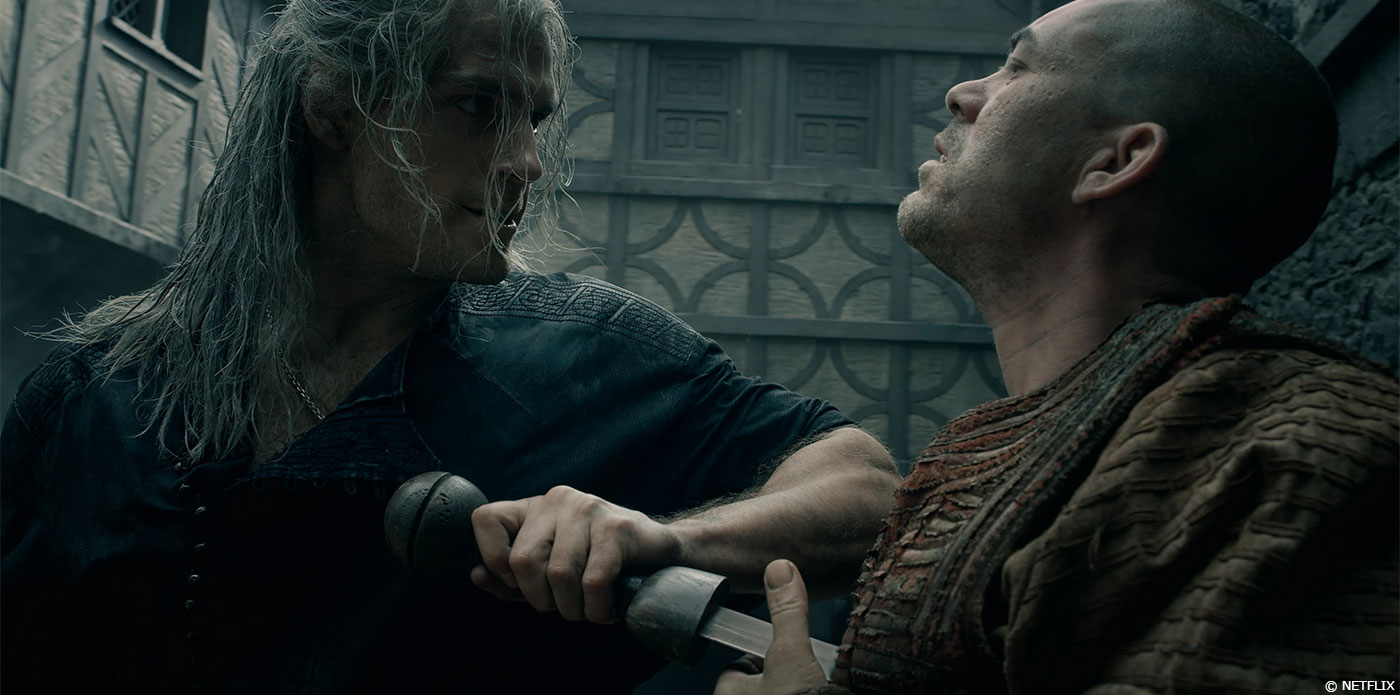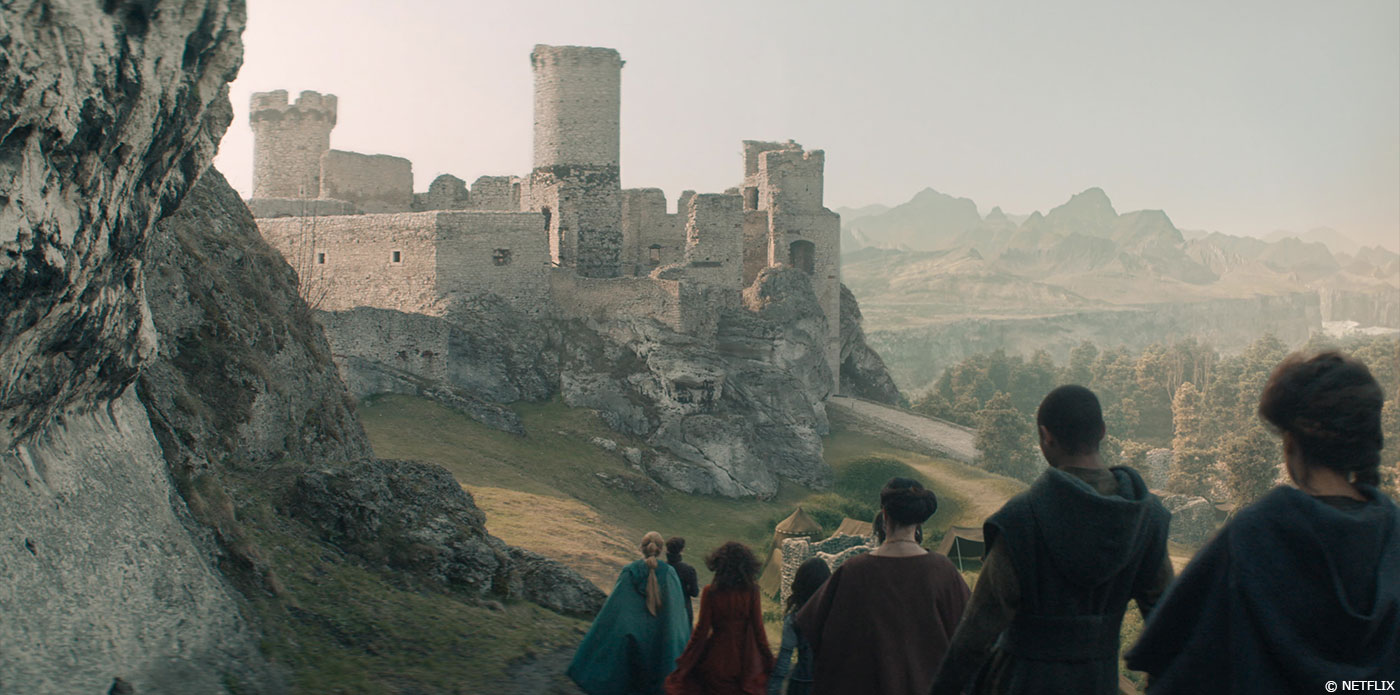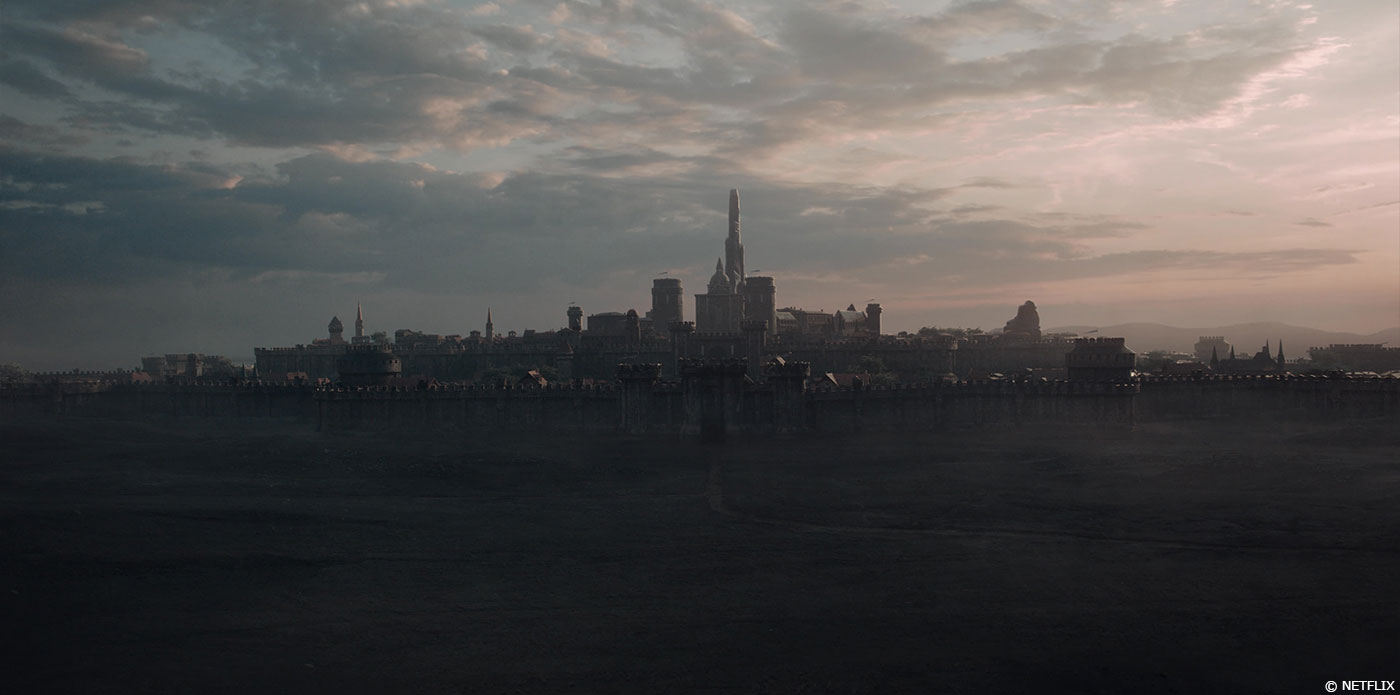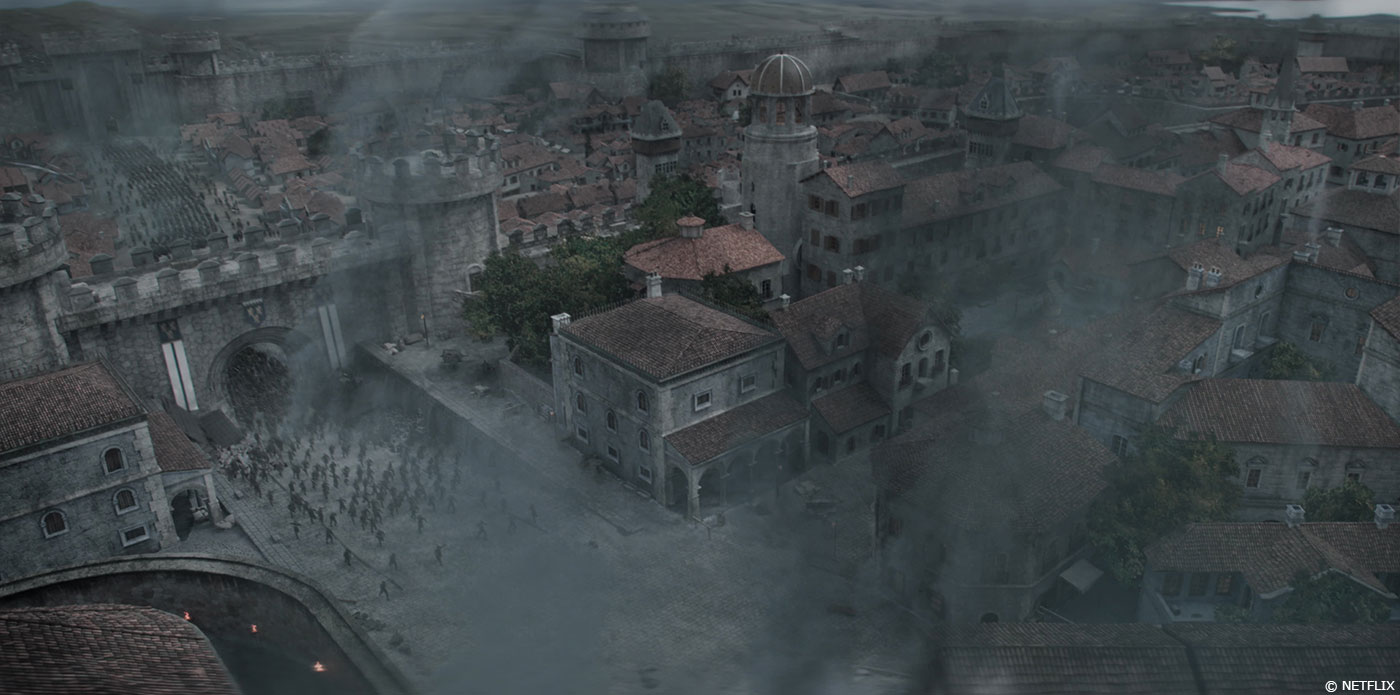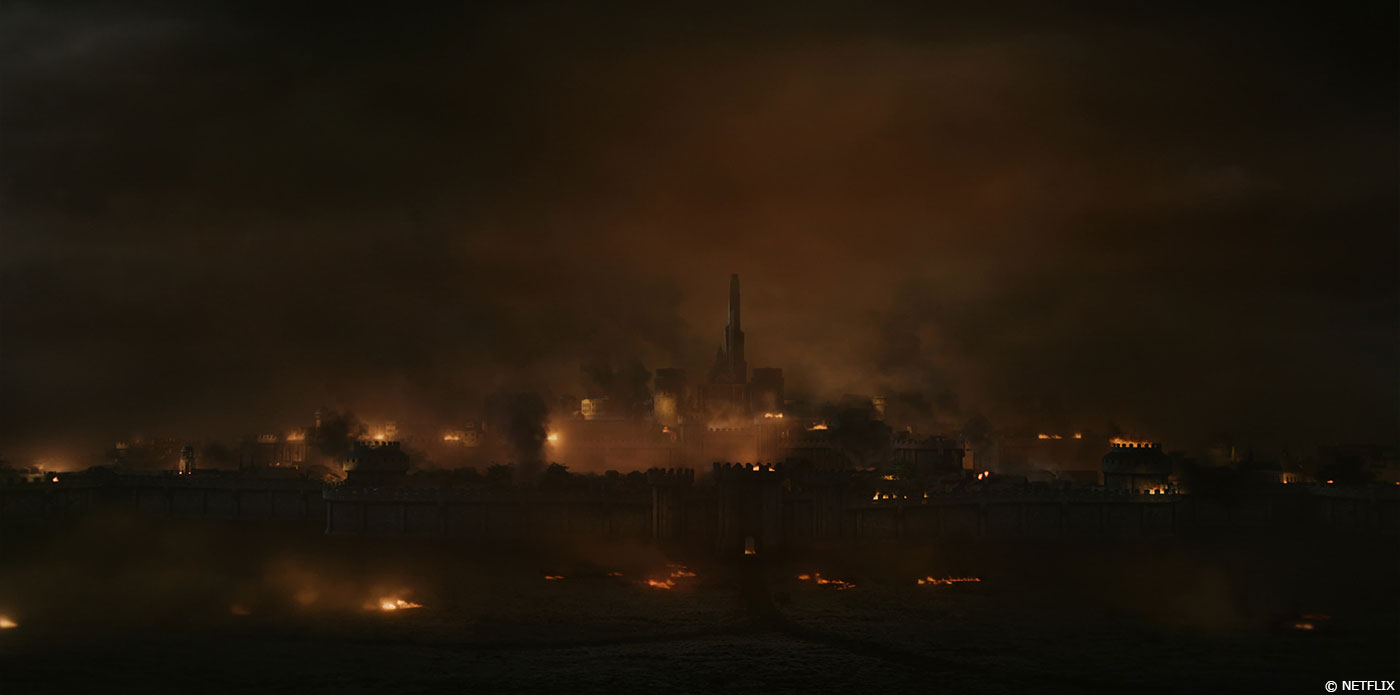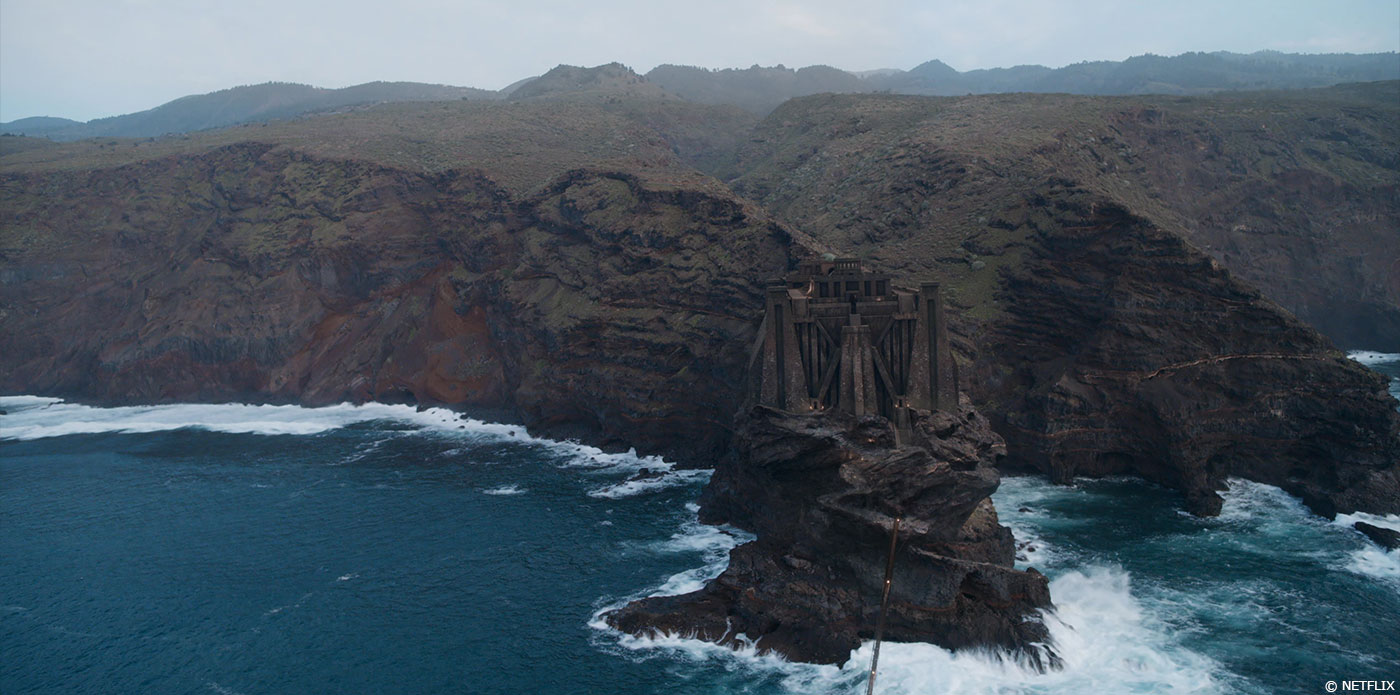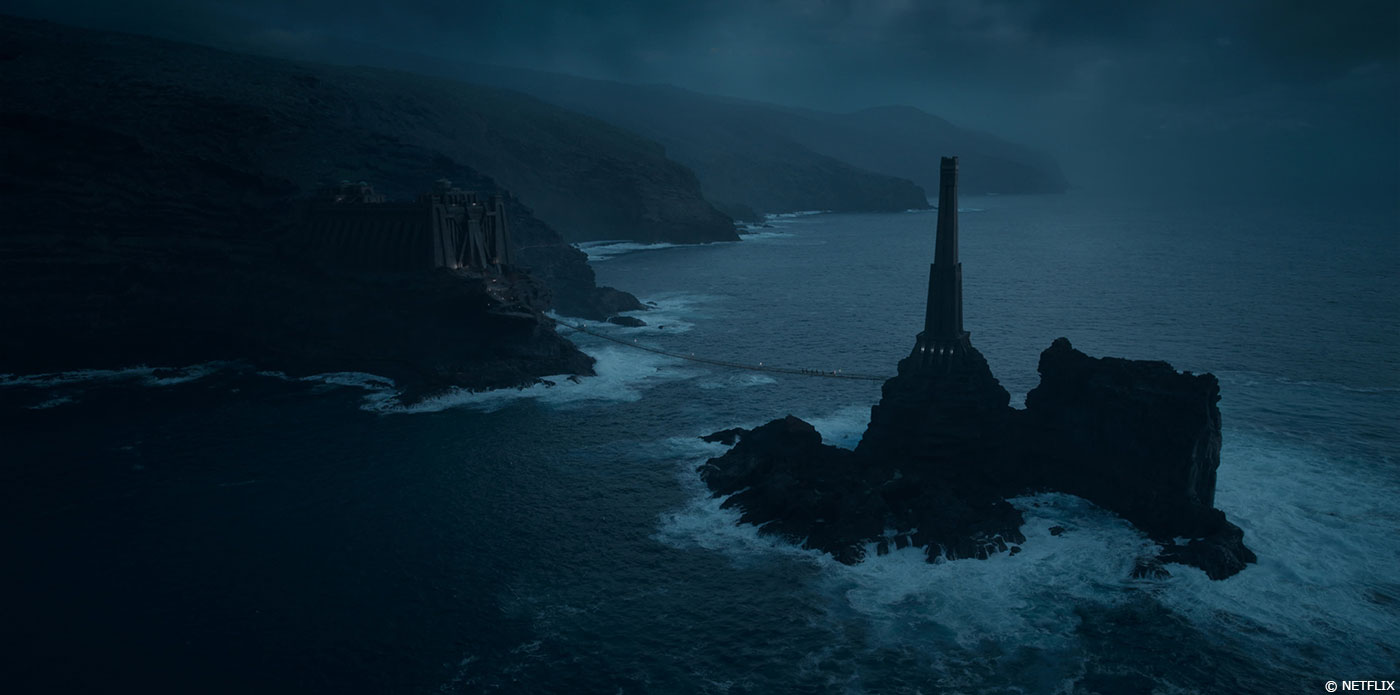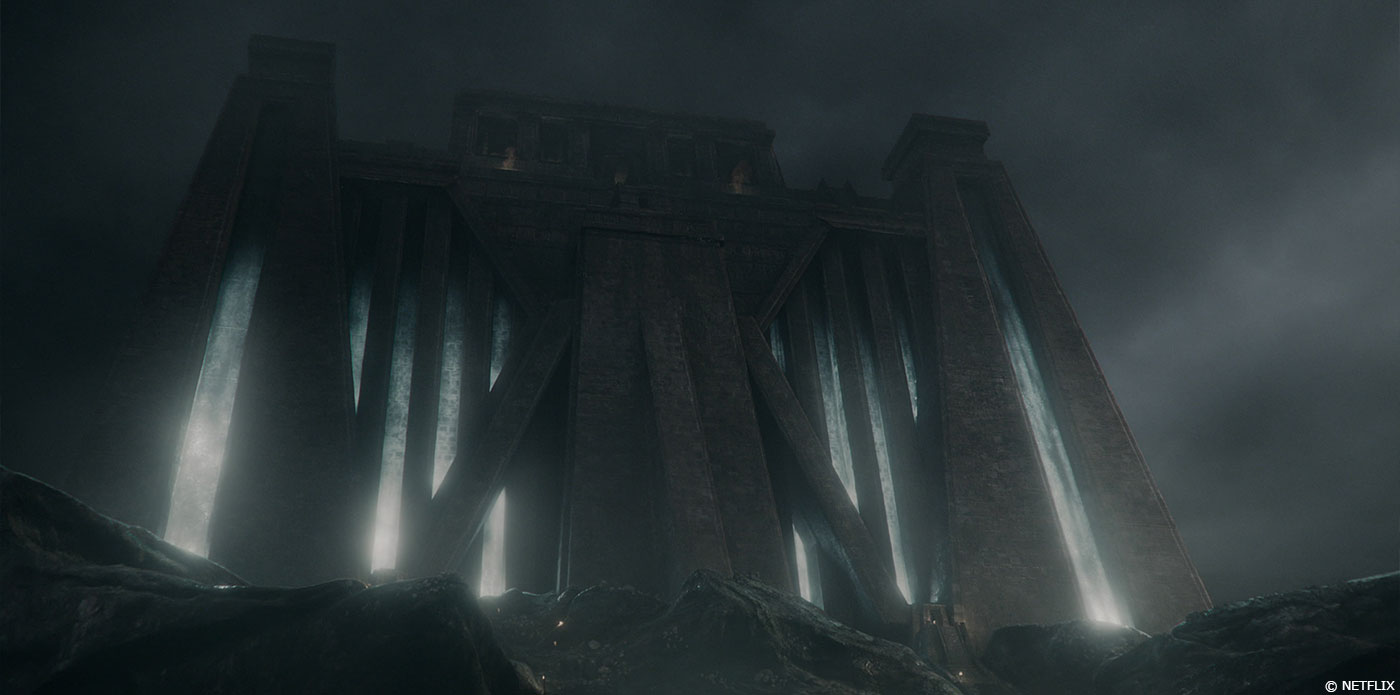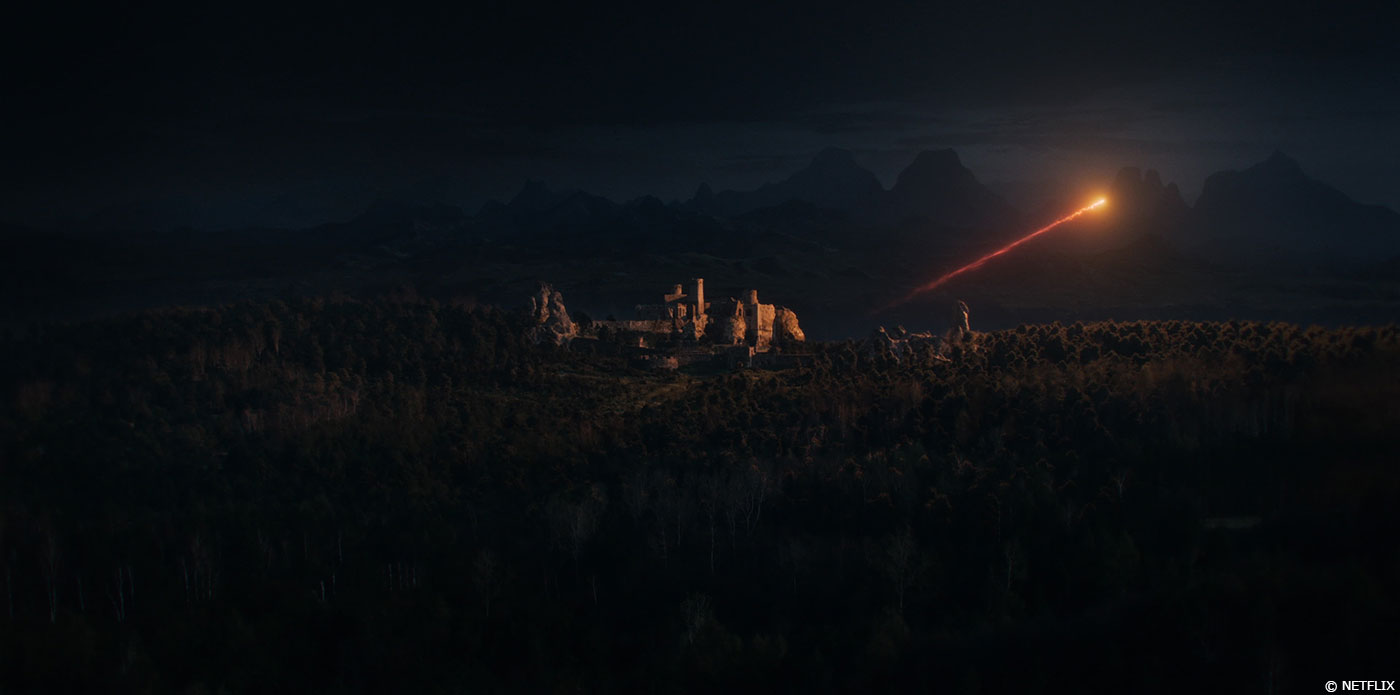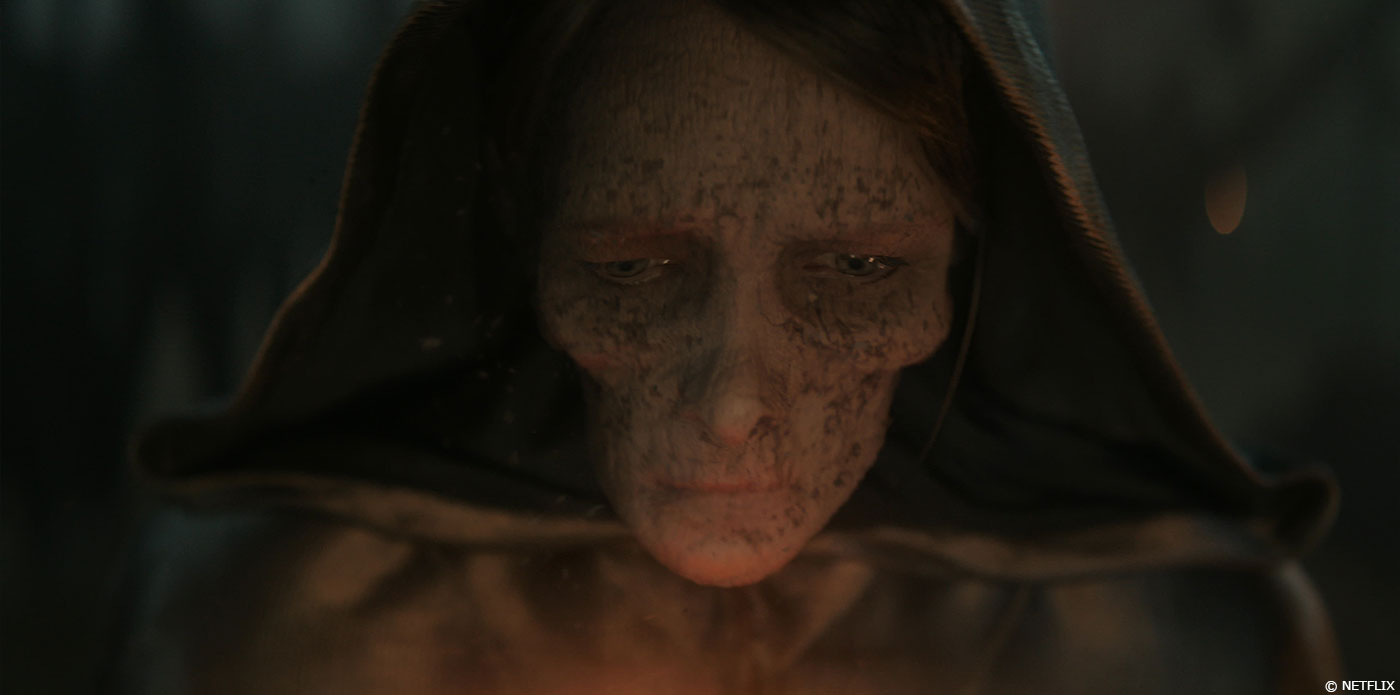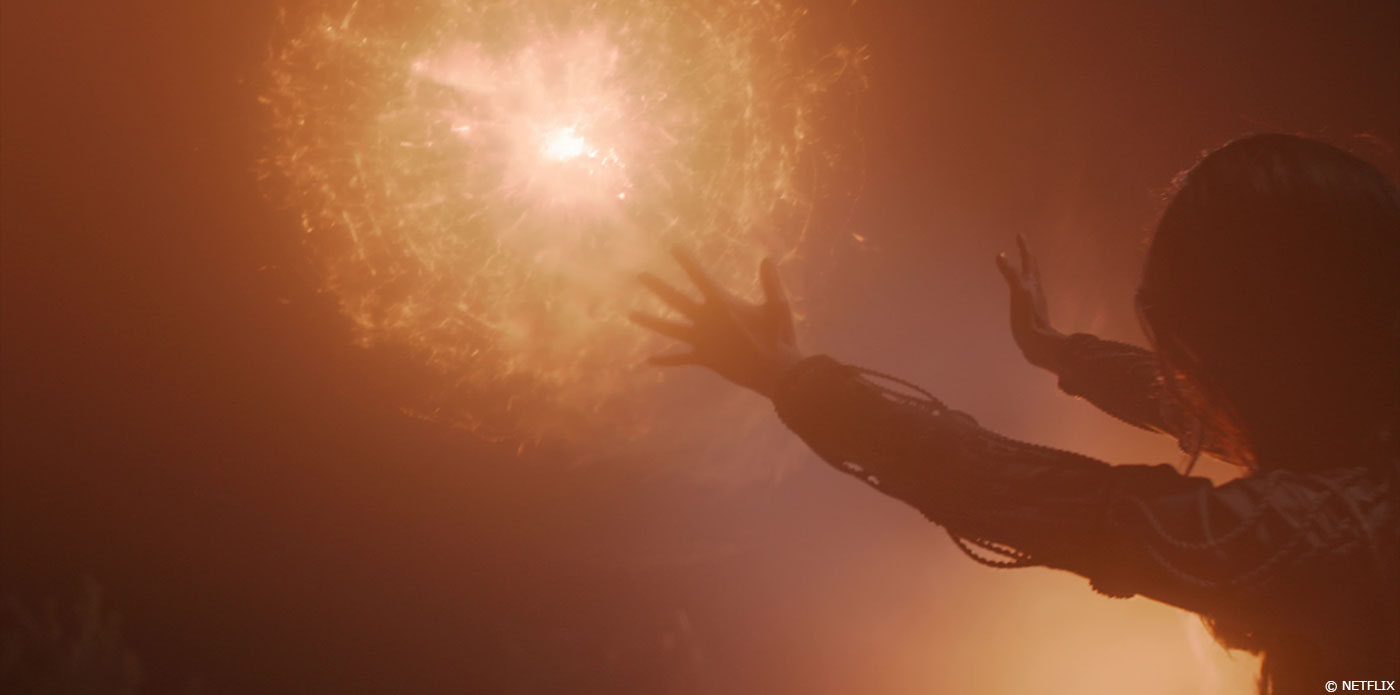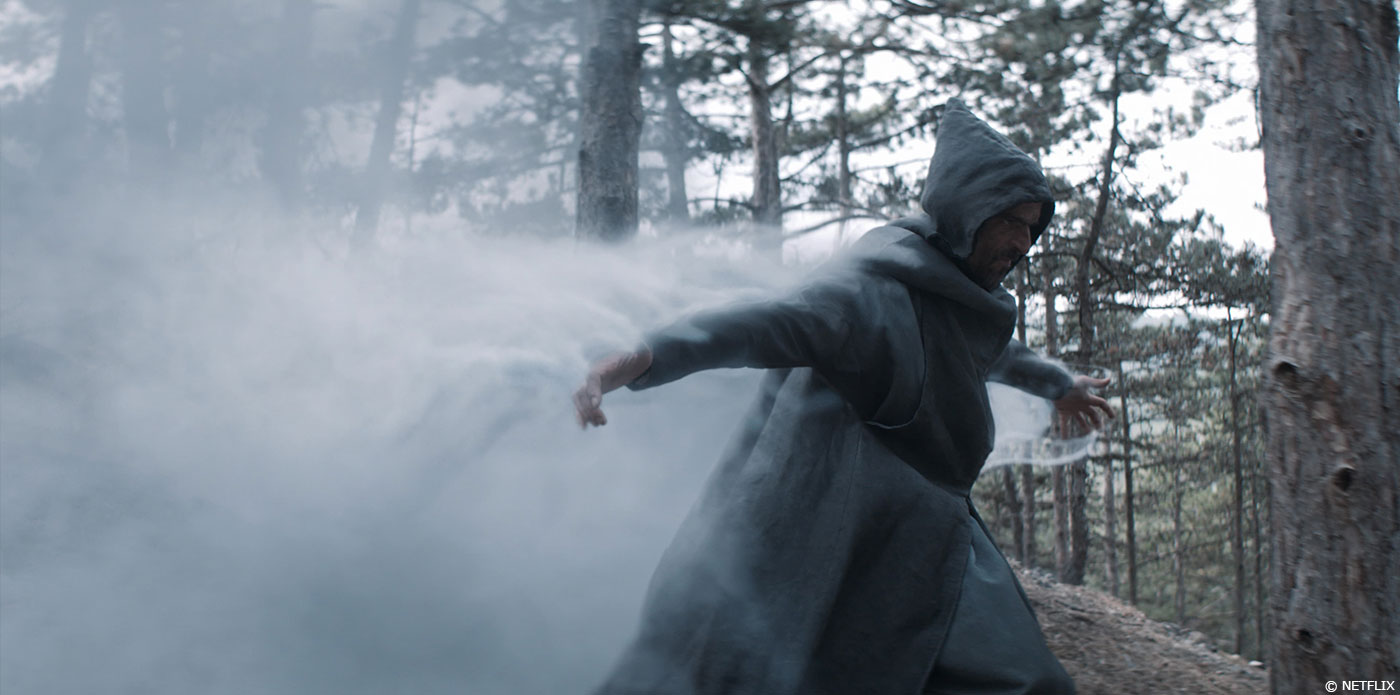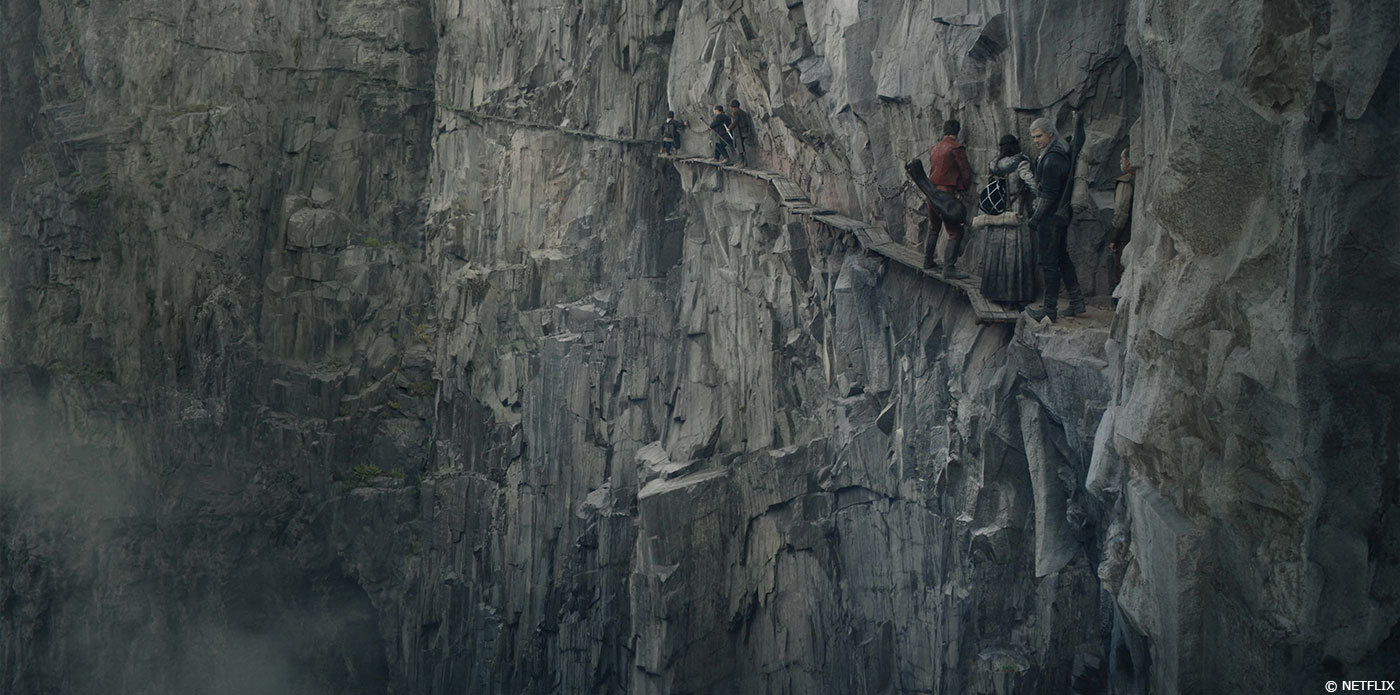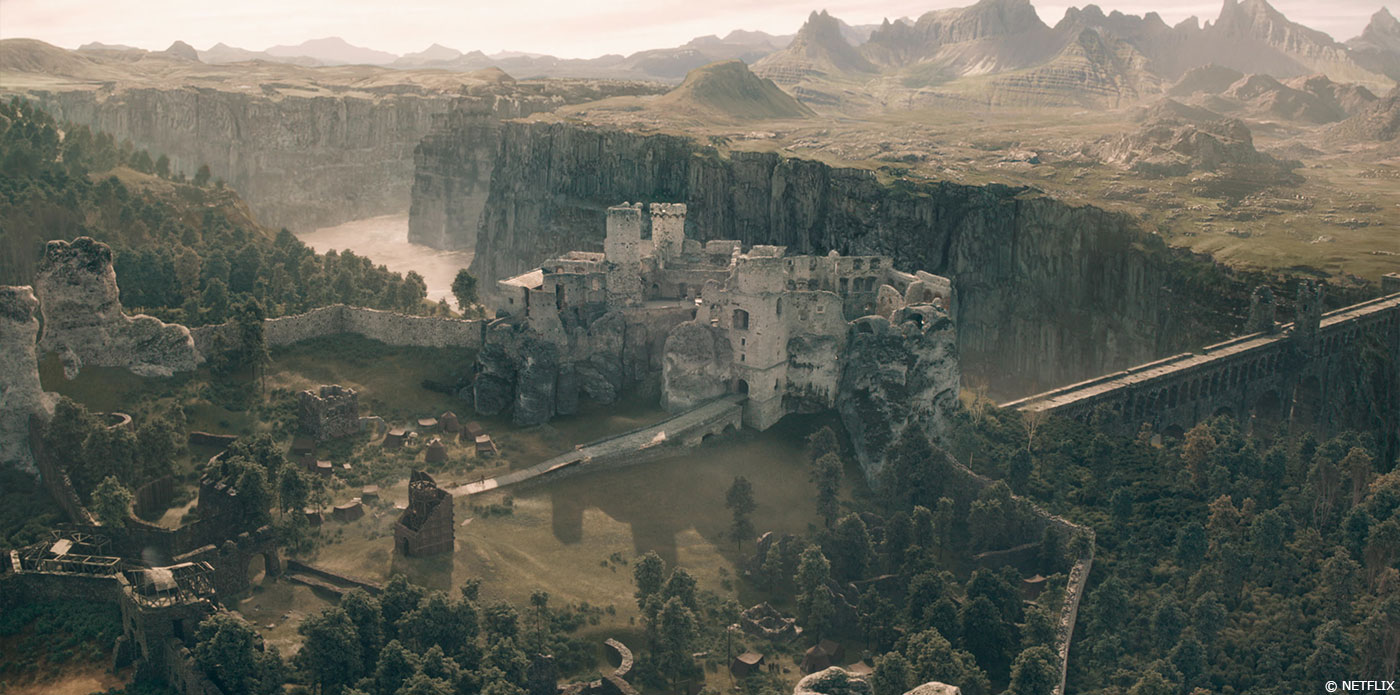What is your background?
Prior to working at Framestore I worked on the studio side in design, but I’ve worn a few hats over the years, from development through to marketing. I came to Framestore to produce visual effects on high-end commercials and then began to produce for television a few years back as episodic began to make a resurgence.
How did you and Framestore get involved on this show?
As fans of THE WITCHER we’d been hoping to be involved with the project for some time. When it landed at Netflix, a company we’ve done a lot of work with, we were delighted to be invited aboard.
How was the collaboration with the directors, showrunners and VFX Supervisor Julian Parry?
On such a vast show our champion is really the overall VFX Supervisor; in this case Julian Parry. Establishing the world of a show in its first season requires lots of thinking and feeling our way through, so much of the logic work was thrashed out in the room together with Julian and via his conversations with showrunner Lauren Schmidt Hissrich. It was really exciting to be involved in that process.
What was their expectations and approach about the visual effects?
The property has a huge following and not just from the video game but also the books, and the audience expectation is incredibly high. The visual effects had to be unique to the world of THE WITCHER, so developing an originality to the visual language and design of the show was really important.
How did you organize the work with your VFX Producer?
Up front, attention was paid to areas that needed creative problem solving, we spent a lot of time designing and developing art department concepts further, to better understand how scenes played out in each location and what opportunities we had to add scale and scope to each story moment.
How did you split the work between the Framestore offices?
All of the work was completed in London by our rapidly-expanding television team, they are pretty great!
What are the sequences made by Framestore?
Framestore completed work for every episode, including lots of environment and FX work and several of the larger sequences. Some of our most notable work includes building Cintra – and setting it on Fire, Geralt’s fight with the Brigands, Yennifer harnessing lighting and Nilfgaard’s fireball assault on the Elven Keep.
How did you work with the art department to design the various locations?
The art department had already done significant work on the design of the locations and magical effects by the time we joined the show but we continued to develop many of these designs throughout the post-production period as the creative and storytelling requirements also developed.
Where was filmed those locations?
Lots of the show was filmed in Budapest and other locations in Hungary including those for Cintra. Aretuza exteriors were shot on Gran Canaria in the Canary Islands and the Elven Keep was shot on location at Slaskie in Poland.
Cintra is seen in various light conditions. How does that affect your work?
Cintra had to be seen not just in different lighting conditions but also at different times of day and states; starting clean and pristine before being set on fire and being destroyed. Lots of our work in Cintra consisted of set extensions, but we had several big establishers to tackle with little room to hide. Using City Engine we were able to construct expandable, populatable blocks where we could art-direct the types of structures present to suit each shot and provide the right density and height of buildings for each moment fairly quickly. This approach gave us flexibility to handle the variety of shots that take place within the city at different moments in the story.
How did you populate the streets of Cintra?
In general, most of Cintra was populated by human performers but in the scenes where the Nilfgaard arrive and attack the Palace gates, our friends at Cinesite provided wonderful crowd setups which we integrated them into our environments, adding atmospherics and destruction on top, the scale of some of these shots is enormous, they were such a dream to produce.
Can you tell us more about the various destructions of Cintra?
Almost all of the destruction in and around Cintra was digitally added, we developed a new library of FX smoke and fire in Houdini, destroyed our pristine buildings in the asset stage and added detritus, finished off with live action fire and explosion elements for some of the bigger shots. The destruction of Cintra continues as Ciri brings down the monolith outside the gates, we developed destruction FX for the crumbling monolith and the crevasse opening in the ground, another great mini-sequence we contributed to.
How did you handle the challenge of the black aspect of Aretuza?
The aerial photography of Gran Canaria provided us with a gorgeous black volcanic landscape with ocean colliding around it. It was important for us to make Aretuza feel as though it not only belonged in this landscape, battered and beaten by the elements over several hundred years, but that it had been hewn from the very rock and constructed using materials from the locality.
Can you tell us more about its vast rocky and water environment?
Production provided us with great aerial photography for this sequence, and we built the CG structures into this gorgeous practical topography, this vast rocky coastline and shimmering water we got for free care of mother nature.
Which one was the most complicated to create?
Cintra and Aretuza were all fairly complex environments to create but The Elven Keep was a significant challenge as we ended up building almost everything in CG, including the castle infrastructure, the surrounding pine forest and terrain, the ravine bridge and distant northern lands beyond it. This is where our Mage’s make their last stand against Nildgaard and it had to feel geographically separated from the rest of the continent via this huge ravine, it’s death or glory, escape is not an option.
The Witcher is full of magic. How did you design and create these FX elements?
It was paramount that the design of the magic within the world of Witcher felt practical and believable. Production had already done some exploration to key moments in the story and we inherited this design but leaned on our internal art department to help flesh these out further. Our FX team were then able to take these designs and bring them to life.
Can you elaborate about the mages turning to ash?
Within the Witcher storyworld, the use of magic always comes at a cost, and each time the lower level mages use it powerfully they meet an untimely end. We covered off a couple of these disintegration moments leaning on our artists to envisage the developing stages of the effect. Then we used a combination of animated facial shapes to suck in the actors face reprojected in CG combining with crumbling particle sim FX driven by Houdini. It was really important to retain the actors performance so as not to lose her humanity in what is quite a solemn and sacrificial moment.
How did you create and animate the fireballs?
The FX fireball sequence was one of our favourite sequences. These fireballs were designed, animated, simulated and rendered entirely in Houdini based on concepts from our internal team. We added a little extra visual cue to the fireballs, a swirling black matter core to highlight the use of dark magic.
Which sequence or shot was the most challenging?
The Mist-Mage approach was one of the most challenging sequences in our body of work, it required a range of heavy simulation work; close up as the Mage emits the fog of war from his body, through to seeing it disperse in the forest at the canopy level and over the wider landscape and then its arrival and envelopment of the Elven Keep. We had to work hard to nail down the continuity and personality of this magical effect, it had to be purposeful but still feel practical.
Is there something specific that gives you some really short nights?
Certainly the size and complexity of the show was a challenge, there was a lot to accomplish in a fairly short space of time, the scope overall was massive. So it was a little fly-by-the-seat-of-our-pants at certain points, but every bit exhilarating though seeing it all come together.
What is your favorite shot or sequence?
There are some many awesome moments to call out, but a personal favourite is the aftermath of the series’ final battle, this surreal sequence where Geralt and Tissaia are searching for Yennifer is simple but there’s a real beauty to the sequence that did it for me. That and Geralt as he unleashes furocious hell against the brigands in Blaviken, I was so impressed with Henry’s performance here, he absolutely nailed every single moment of the stunt to which we added the trimmings.
What is your best memory on this show?
I’ve many great memories along the way, but I’m pretty sure it’ll be December 20th this year, sitting down to see all our combined efforts together in one place, from the comfort of home.
How long have you worked on this show?
We spent almost eleven months from beginning to end.
What’s the VFX shots count?
We worked on a total of 311 shots, with just over 300 finals.
What was the size of your team?
We had close to a hundred artists working on the show at Framestore.
What is your next project?
I’ve love to tell you, but I’m under an NDA.
What are the four movies that gave you the passion for cinema?
Like every 80s kid, I grew up watching RETURN OF THE JEDI, BACK TO THE FUTURE, INDIANA JONES AND THE LAST CRUSADE and JURASSIC PARK on repeat, we certainly don’t watch em like we used, some films were made to return to. The T-Rex breaks through the electrified fence, the Millenium Falcon destroys the deathstars’ main reactor, The Delorian takes to the sky, Indie walks across the invisible chasm. These films contain some cinematic moments that are simply transcendent, emotional moments that just stay with us, I’m sure movies today are still defining childhoods, but those are the ones that captured my imagination and led me to work in Film and Television.
A big thanks for your time.
THE WITCHER – VFX BREAKDOWN – FRAMESTORE
WANT TO KNOW MORE?
Netflix: You can now watch THE WITCHER on Netflix now.
Framestore: Dedicated page about THE WITCHER on Framestore website.
Julian Parry: My interview of Julian Parry, Overall VFX Supervisor on The Witcher.
© Vincent Frei – The Art of VFX – 2020


